SafeHome.org may receive compensation from some providers listed on this page. Learn More
We may receive compensation from some providers listed on this page. Learn More
SafeHome.org may receive compensation from some providers listed on this page. Learn More
We may receive compensation from some providers listed on this page. Learn More
A powerful bullet-style outdoor camera with sharp images and an affordable price.

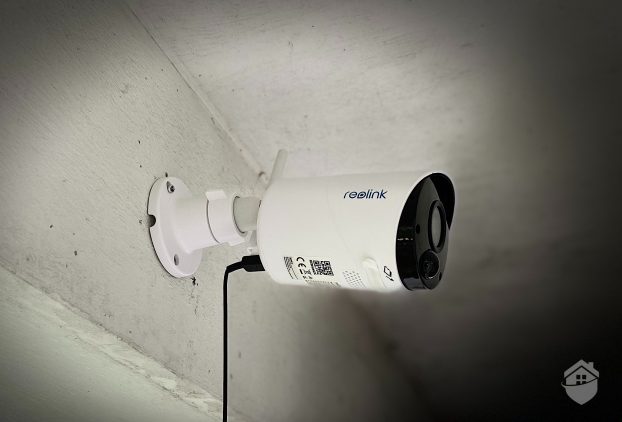
Editor’s Note: We like Reolink’s Argus line of cameras, but we prefer the new Nest cameras sold by ADT. Check out our ADT price guide to learn more about their home security system and camera packages. Or if you’re looking to save, SimpliSafe cameras are the way to go.
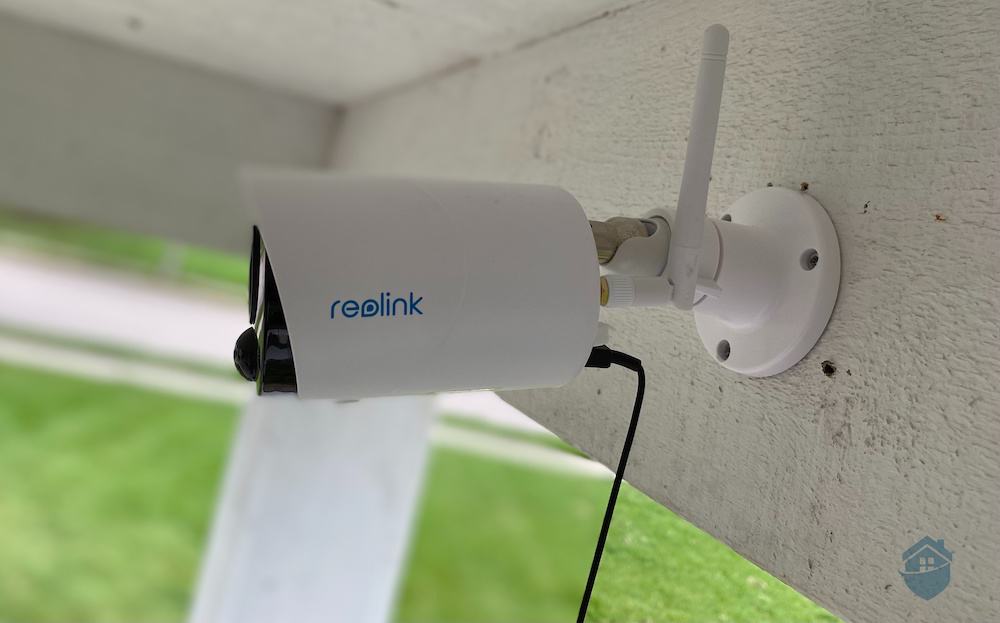
Reolink Argus Eco – Installed
As I continue to test and review cameras in Reolink’s diverse collection of battery-powered, Wi-Fi, wired, and Ethernet security products, the nod to flexibility is a running theme.
This is a big selling point for Reolink: Cameras that go wherever you do, adapt and conform to their surroundings, and anyone can use. As you’ll see in today’s hands-on review, the Reolink Argus Eco checked many of those boxes, with just a few minor areas for improvement.
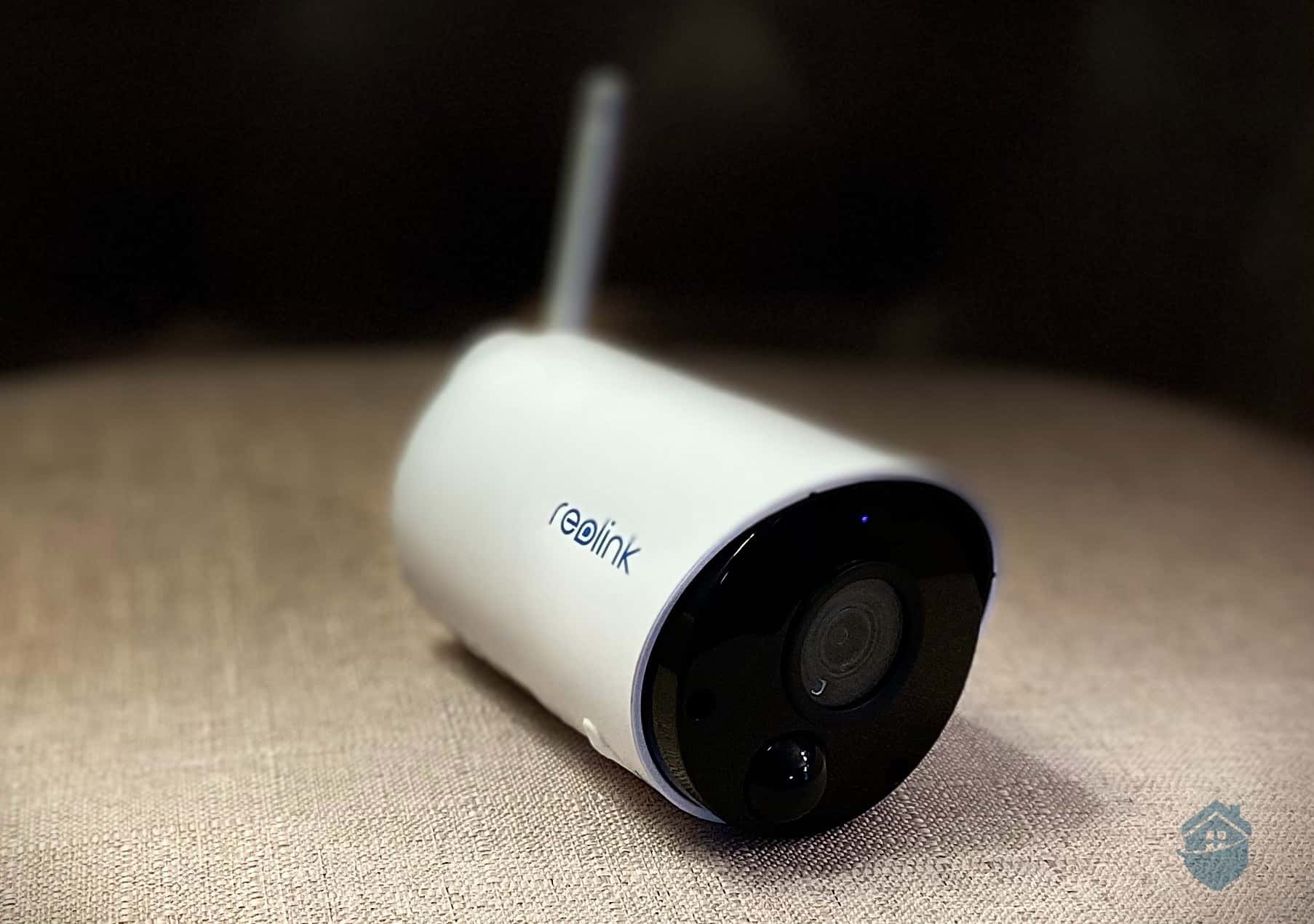
Reolink Argus Eco Camera
I put the Argus Eco through a rigorous series of tests, exploring the camera’s features, technology, and all-around experience. After all, even the most user-friendly cameras around ultimately have their flaws. It’s always good to know what you’re getting, inside and out.
With that, let’s review the Reolink Argus Eco. I’ll begin with a few key pros and cons:
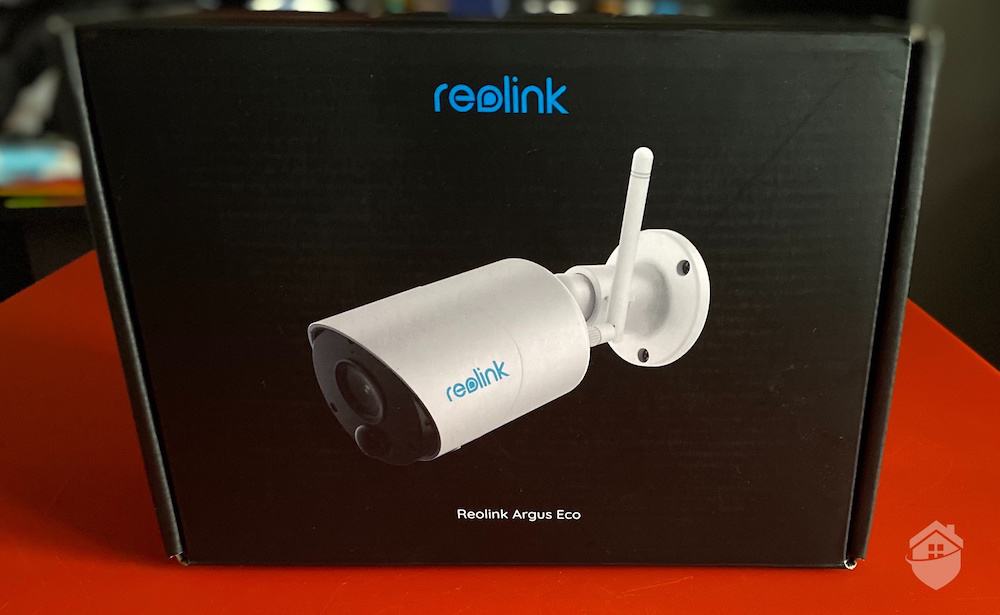
Reolink Argus Eco Packaging
True to Reolink’s adherence to simplicity, the Argus Eco box was simple, bare bones, and didn’t contain a mess of wires and hardware. In the box, you’ll find just the camera, a security mount, a USB adapter for intermittent charging, and some screws.
Looking deeper, you might discover a built-in micro SD card slot not far from the QR code. Here’s another sign of Reolink’s flexibility: With the Eco, you can choose between storing recordings locally through a (not included) micro SD card, or sign up for one of Reolink’s cloud storage1 plans, which I’ll discuss in detail below.
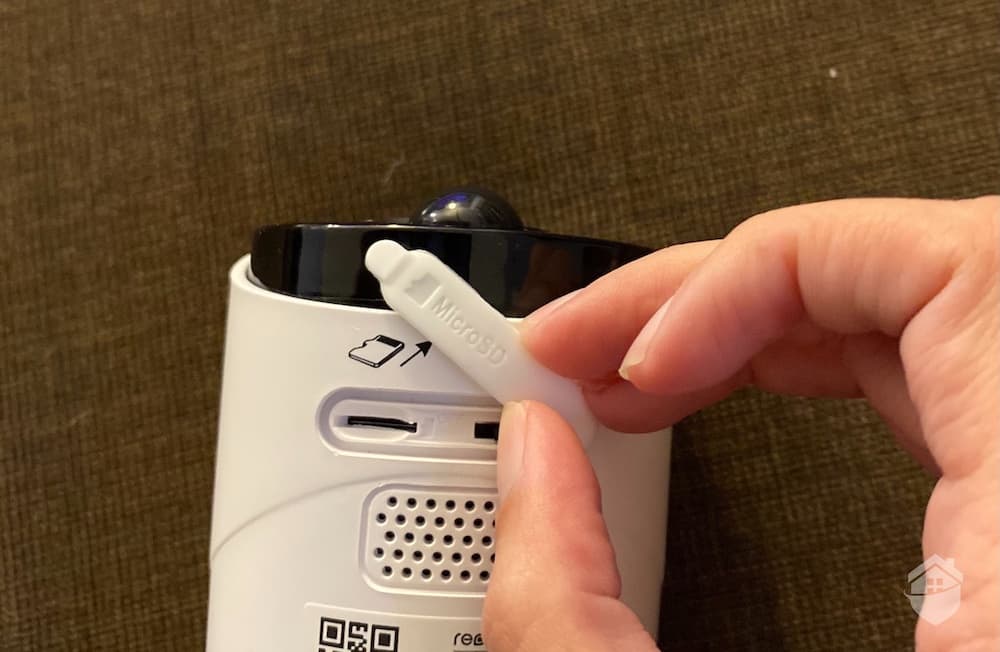
Argus Eco ‘belly,’ with speaker and micro SD slot
Pivoting to installation, I found that the camera attaches to its security mount via a simple screw. This means you shouldn’t have to fuss too much with the drill. And the mounting plate came with handy, straightforward instructions. So as far as DIY installation goes, you’d be looking at a job lasting between four to five minutes. Pretty fast, right?
But … let’s not forget that these cameras, like many of the best wireless cameras in the industry, connect to an app via a QR code. This, again, took just a few minutes, even with the compulsory account linking and entering Wi-Fi credentials. And just like that, the setup was complete.
Pro Tip: Though it’s considered a fully wireless camera, the Argus Eco does require some installation pre-planning. You could connect it to a Reolink Solar Panel, where it would remain fully charged. Those are important points to consider, so be sure to map this out before beginning your installation.
With that out of the way, I finished securing the camera to the exterior wall and began my thorough testing of the Argus Eco.
It’s good to expect a few hiccups with setup, just like I had when reviewing the Argus 2 and other Reolink cams. But overall, installing the Argus Eco was smooth and fast.
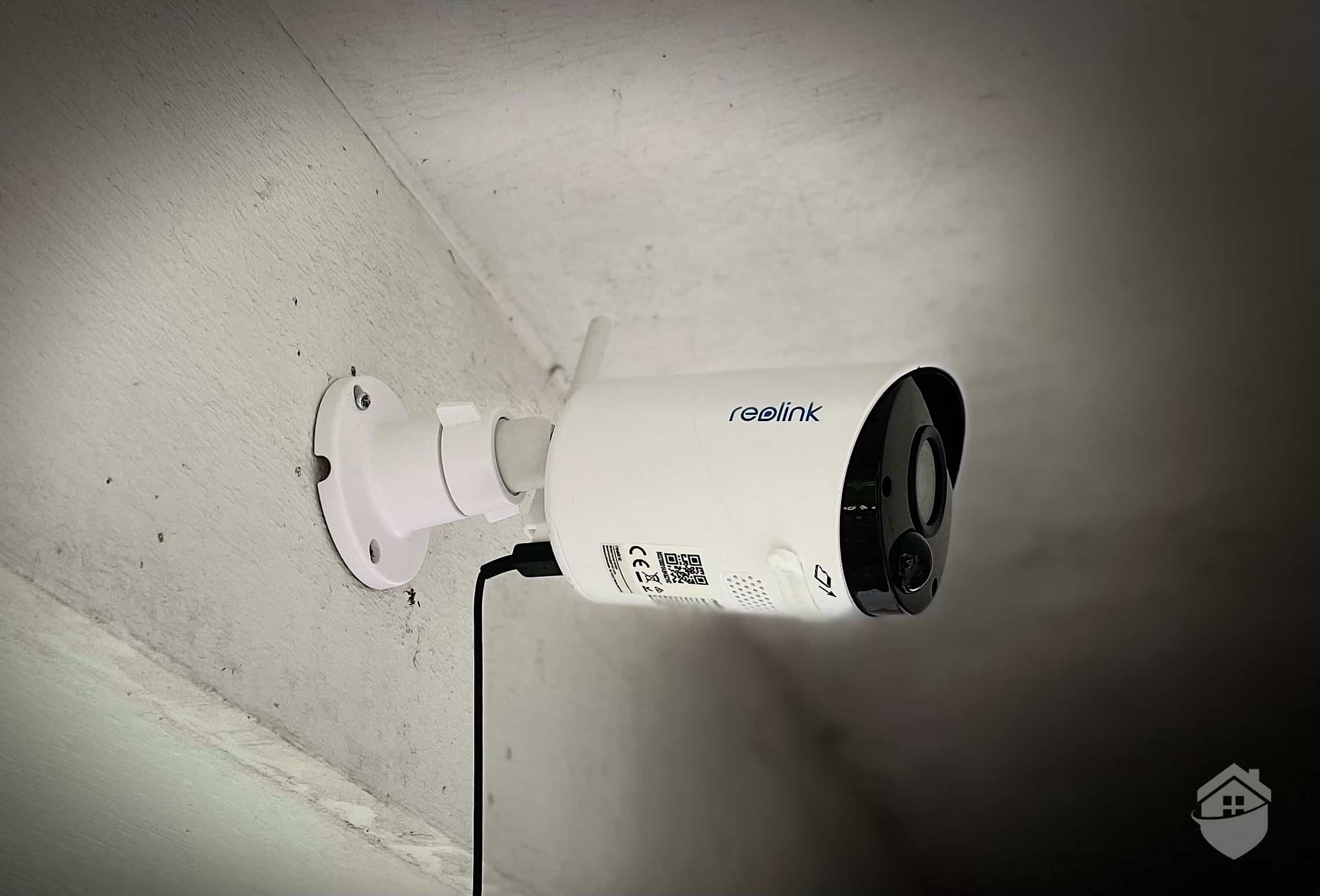
Reolink Argus Eco Mounted
For a dedicated outdoor camera with a simple bullet design and a basic feature set, this is a good camera – but there’s certainly nothing glamorous or fancy about the Argus Eco. After all, Reolink is considered a “modest” camera brand in contrast to cameras with more advanced features and tech.
Google, for one, recently injected their handsome Nest cams with artificial intelligence facial recognition, which learns faces to distinguish who “belongs” on your property and who doesn’t. I recently rolled up my sleeves for a Google Nest Cam review, and though it wasn’t a perfect experience – the cameras needed time to learn all those different faces – they did perform exponentially better with that added dose of technology.
FYI: Many cameras on the market today provide detection for specific objects, like people or animals. So if those premium features sound enticing, it’s possible that a Nest Cam might suit you. Whether it fits your budget – keeping in mind that the outdoor Nest IQ cam starts at $399 – is a decision only you can make.
Comparisons aside, let’s get into some of my favorite features of the Reolink Argus Eco.
When your Wi-Fi network is at its most stable, you should see crystal-clear images from the Argus Eco. At night, it will automatically transition from day to night vision. Overall, picture quality on the Eco measured up to some of the Ring outdoor security cameras I tested.
This is huge, as video quality is one of the biggest determining factors in choosing a security camera. (For lots more factors to consider when choosing cameras, see our in-depth security camera buying guide.)
Since the Argus Eco is considered to be in the “affordable” price range, I expected to see a grainier picture equivalent to some of its competitors in that price range, like Zmodo, a camera I reviewed not long ago. While that’s a decent camera overall, it did sometimes struggle to deliver that optimal 1080p resolution in tests.
However, you’ll likely find a better visual result with the Argus Eco. Day or night, expect the camera to pick up plenty of detail if a porch pirate or burglar were to target your home.
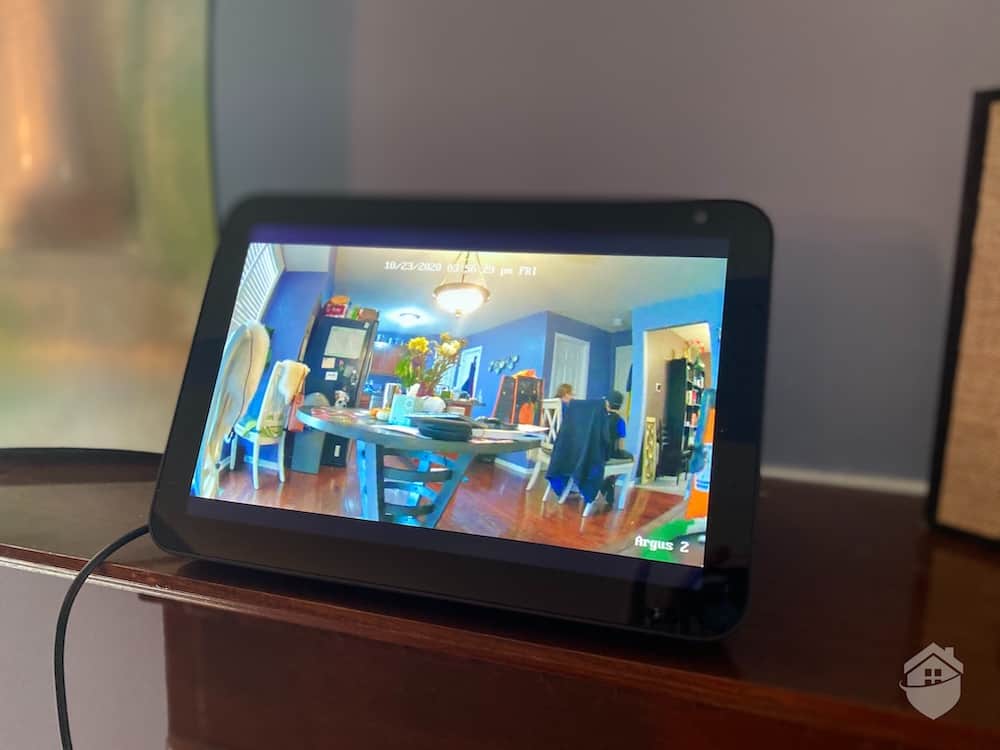
Reolink Argus 2 displayed on Alexa
In a fairly recent upgrade, Reolink now has smart home compatibility with both Amazon Alexa and Google Assistant. This is increasingly becoming a must-have feature in home security, however, so it’s not a surprise. (For more automation options in the industry, visit our thorough home automation guide.)
But what I did like was seeing a Smart Home2 tab in the Reolink app, which communicated with the Echo Show to discover the camera so that I could use voice commands to pull up the Eco’s display. Echo, meet Eco!
The two made a nice pair, but it’s worth mentioning that you can display only one Reolink camera on the Echo Show screen at a time. So whereas a smartphone would let you pull up a four-panel display to look at everything at once, you can’t replicate that with the Alexa device. That was the only downside to using Reolink with Alexa, but it wasn’t a big concern for me.
Not every outdoor camera has two-way talk, so when you see one, it’s a nice plus. Why? Because using this feature is a great way to scare away would-be intruders who might be lurking outside. Note that the audio quality was fine, but it didn’t stand out as anything truly special. You’ll find the two-way talk feature inside the app. Press and hold the microphone to speak, and let go to listen. It’s a straightforward feature, and one that I use often.
Did You Know? Argus Eco does not support continuous recording, and neither does its sibling, Argus 2. Indeed, these cams are built for self-monitoring, but if you really want the camera to record 24/7, check out my review of Reolink’s E1 camera, which supports both motion-activated recording and continuous recording.
Active deterrent features like a siren are not included in every security camera, but they are highly effective at scaring off potential criminals, which is super important. So it’s nice to see a built-in siren on the Argus Eco.
As an aside, it also makes a fun Halloween prank.
True to form, Reolink houses all of the Argus Eco’s controls in a simple, well-presented app, which I downloaded with ease on both an Android phone and iPhone. This is standard throughout the Argus series, including the more robust Reolink Argus 3 Pro camera I tested. You’ll find most of what you need from the app’s home screen, which might not win any awards for sophistication but definitely delivered on intuitiveness.3
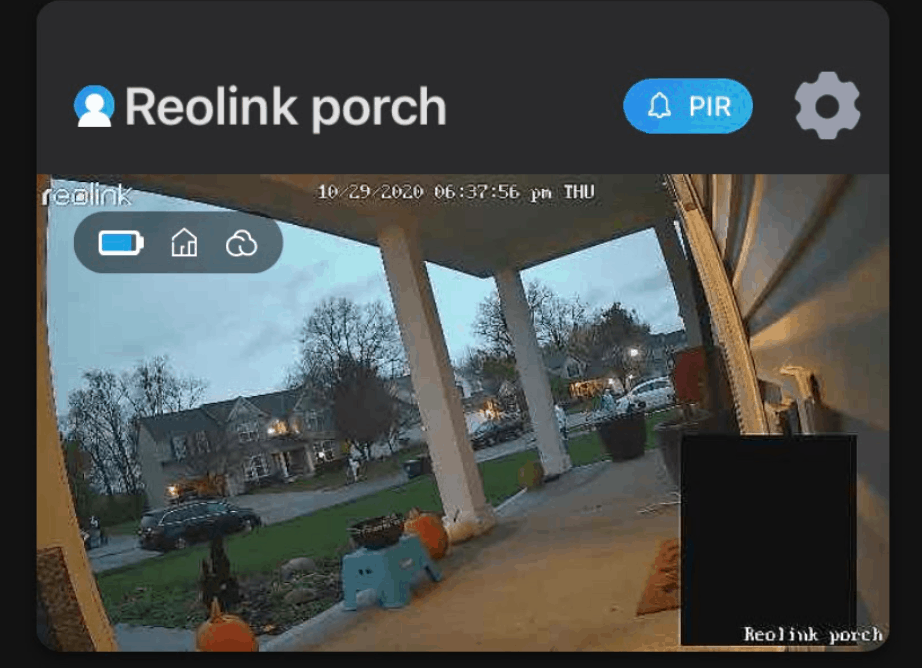
Reolink App Live Look-In
By clicking on the live-feed pane, you can capture screenshots, play/pause the livestream, download and share video, adjust camera resolution, use two-way talk, and trigger the camera’s built-in siren.
You’re also able to change the order of the camera display, showing all of the cameras on one screen. It’s not huge, but it is a nice touch that makes self-monitoring easy.
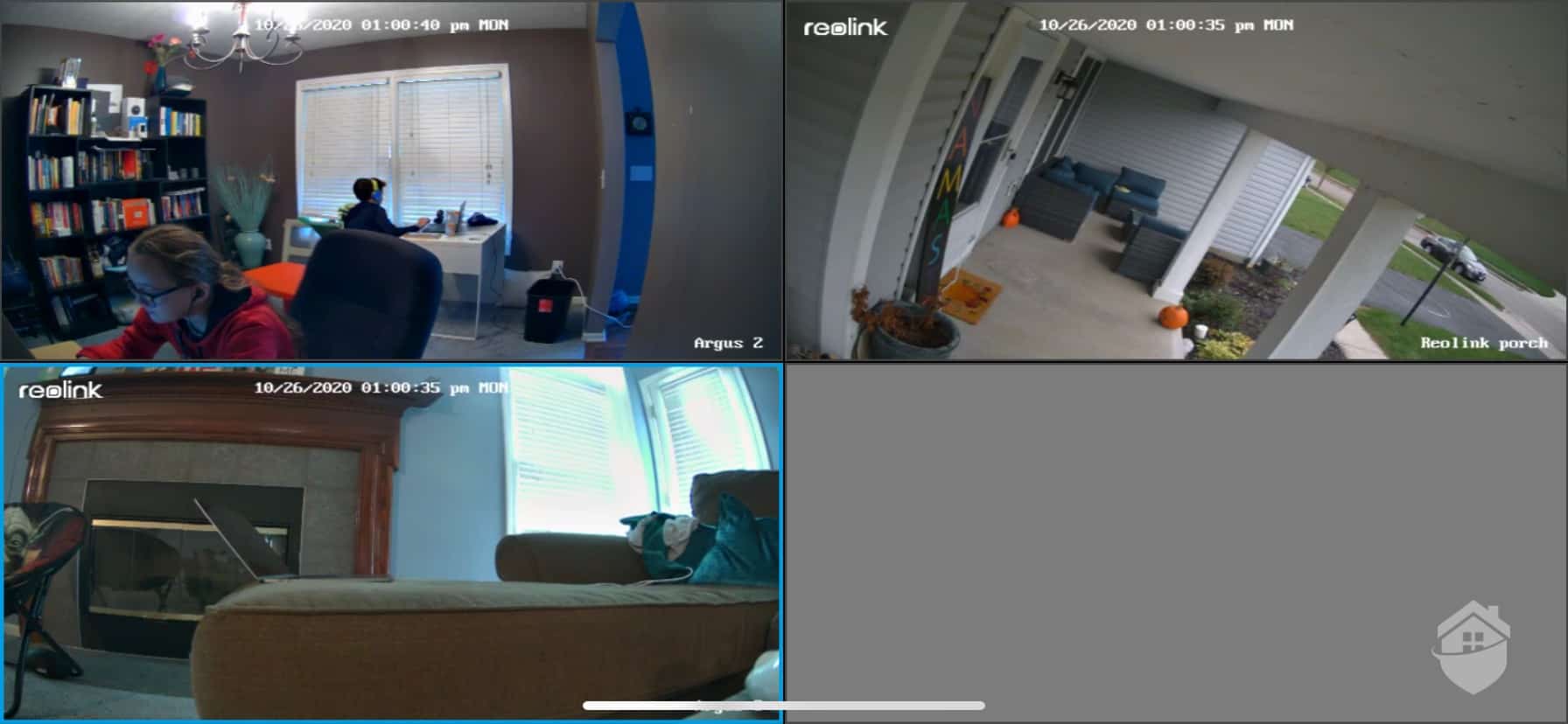
Reolink Argus Eco 4 Camera Display
It could also be really crucial in urgent situations. If your camera picks up something suspicious or threatening, for instance, it won’t take long to deploy the built-in siren (which, again, does a great job sending bad guys — and dogs — running).
I’ll keep it short and sweet on pricing on the Argus Eco. It’s cheap!
With basic motion features and industry standard (but still high-quality) 1080p HD video, just remember that $63 is a really good deal for a wireless, Wi-Fi-enabled, sturdy outdoor security camera. In most instances, you get what you pay for with cameras. But as far as value, Eco definitely has an edge.
For comparison, I broke down a few of Reolink’s cameras and their prices below.
| Reolink Camera | Type of Camera | Key Features | Price |
|---|---|---|---|
| Argus 3 Pro | Outdoor Battery/Solar | 2K Super HD Video Built-in Motion Spotlight Color Night Vision |
$109.99 |
| Argus 3 | Outdoor Battery/Solar | 1080p HD Built-In Motion Spotlight Starlight Night Vision Two-Way Talk |
$109.99 |
| Argus 2 | Indoor/Outdoor Battery/Solar | 1080p HD Starlight Night Vision Two-Way Talk Weatherproof |
$94.99 |
| Argus Pro | Outdoor Battery/Solar | 1080p HD Two-Way Audio Weatherproof |
$69.99 |
| Argus Eco | Outdoor Battery/Solar | 1080p HD Two-Way Audio Weatherproof |
$62.99 |
| E1 | Indoor Wi-Fi Plug-in/PTZ |
Pan-Tilt-Zoom Two-Way Audio 3MP HD |
$39.99 |
| E1 Outdoor | Outdoor PTZ Plug-in/Wi-Fi or PoE |
Pan-Tilt-Zoom Two-Way Audio 5MP HD |
$99.99 |
It’s nice having options, isn’t it? With Reolink’s Argus Eco, you can store videos, motion recordings, and saved images on a micro SD card, thanks to a micro SD card slot that’s built right into the camera.
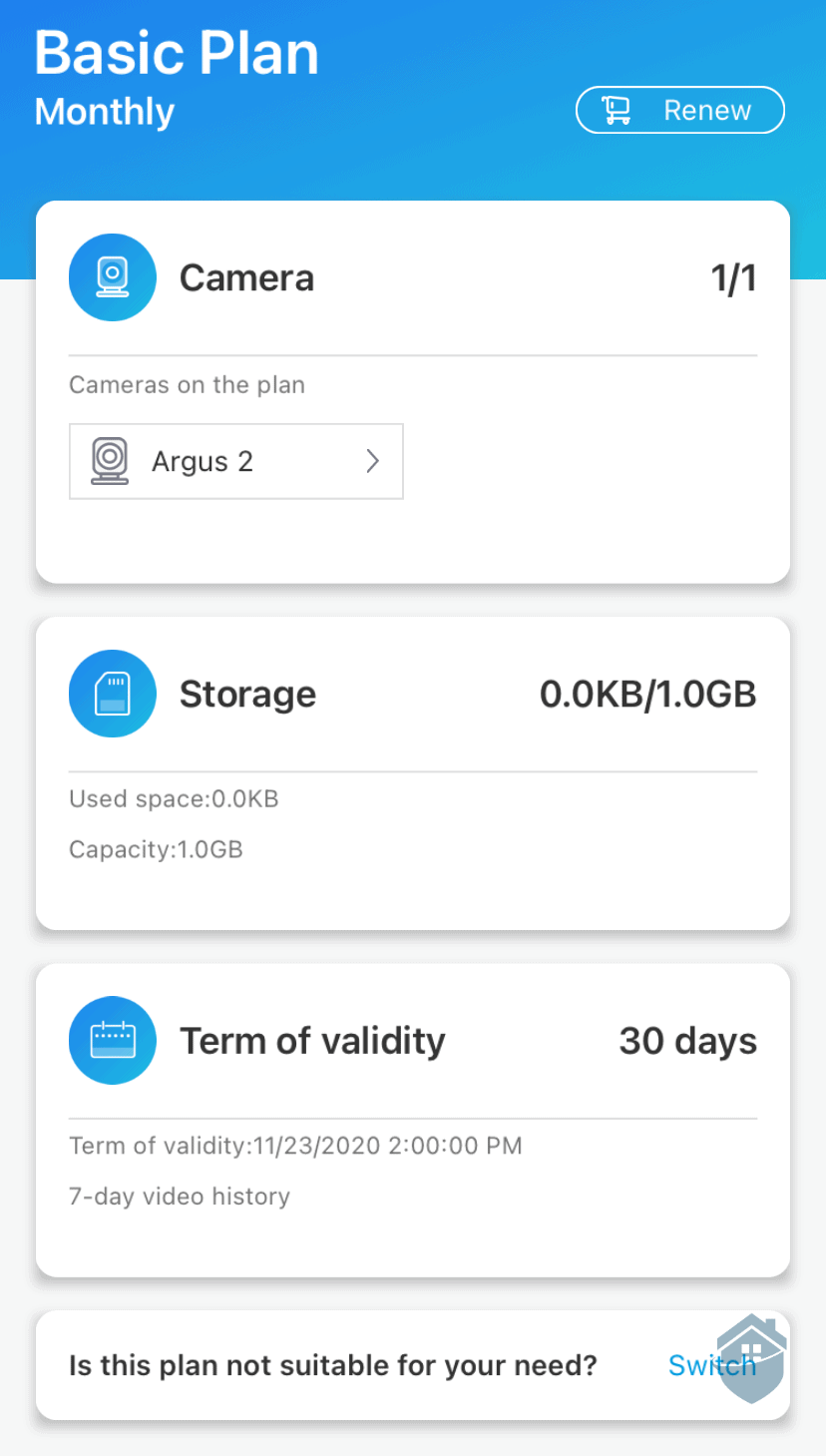
Reolink Cloud Storage
But Reolink’s cloud storage options are also worth checking out, either as a supplement to local storage or as a replacement for it. A standard Reolink Cloud plan costs $3.49 per month, with no yearlong contract to sign.
While not quite as cheap as, say, the standard cloud subscription fee for Wyze cameras, which is $1.49 per month, I’ve found Reolink’s cloud storage options to be quite reasonable. (Head over to my full Wyze cam review for lots more on this unique brand.)
Aside from the affordability points, it’s also worth noting that connecting to Reolink’s cloud is fully optional. Remember, they’re all about freedom here.
See below for a more detailed breakdown of Reolink’s cloud storage options.
| Basic | Standard | Premier | Business |
|---|---|---|---|
| 1-camera limit | 5-camera limit | 10-camera limit | 30-camera limit |
| 7-day storage | 30-day storage | 30-day storage | 60-day storage |
| 1 GB of storage | 30 GB of storage | 80 GB of storage | 150 GB of storage |
| Free | $3.49 per month | $9.99 per month | $14.99 per month |
And speaking of monthly fees, several camera brands charge significantly more per month for the same level of storage Reolink’s standard cloud plan provides. In my recent analysis of Amcrest cameras, for instance, you can learn about a $6-per-month cloud storage option that includes a mere seven days of video history. It’s a small discrepancy – and keep in mind Amcrest makes some nice cameras – but it’s still worth a mention.
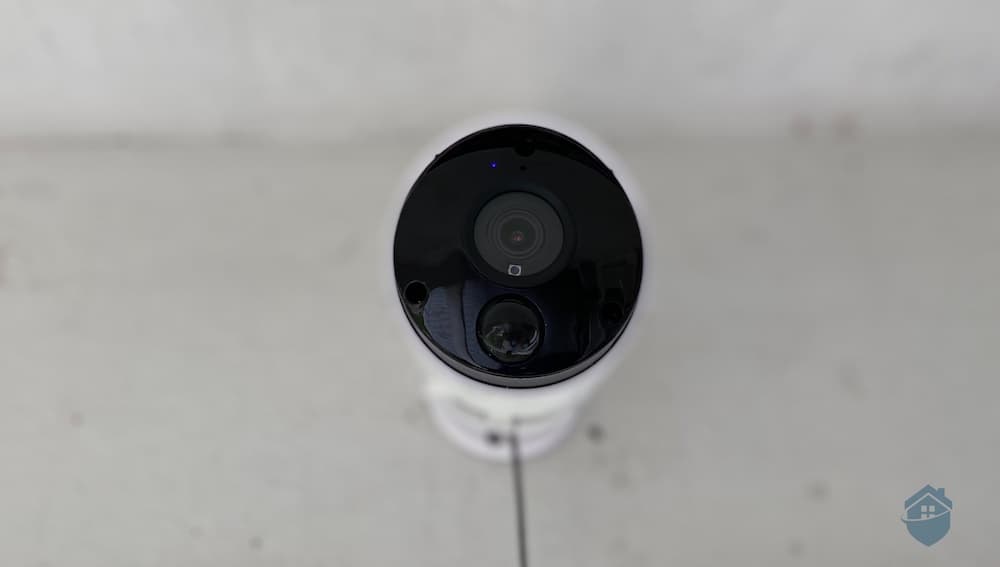
Reolink Argus 2
With plenty of control over features on the Argus Eco and a great experience overall, there’s plenty to like about this camera. You might miss a few fancier features in many newer cameras these days – things like person detection, 24/7 recording, and automatic zoom. While not essential, these features do enhance the overall experience. Just something to keep in mind as you’re narrowing down your choices.
But without all of those fancy enhancements, you’re still left with a very well-performing camera. With the Reolink Argus Eco, I genuinely enjoyed learning about and interacting with this camera. Its greatest assets are its flexibility and affordability, and it’s an all-around capable, flexible outdoor security option that delivers the essentials beautifully.
To learn more about outdoor cameras that shine in flexibility, check out our list of the best outdoor security cameras.
Yes, you can definitely use Argus Eco indoors. But if you ever need to move it outside, the camera is IP65-rated for weatherproofing. That basically means it will protect from dust, wind, and rain.
Reolink’s support page is packed to the brim with videos, tutorials, and Q&A’s that address pretty much every question you could ever think of regarding security cameras. Beyond that, I had some initial network-related questions answered promptly after emailing customer support.
Yes. There’s a small but recognizable share icon at the lower right-hand side of the app. Once you tap that, you’ll see options to share via email, text, etc.
Yes. As mentioned, it has an IP65 weather rating, which will keep the camera protected from the elements in most cases.
Yes. Reolink’s basic plan includes seven-day storage and covers one camera.
IBM Cloud Education. (2019, June 24) What is Cloud Storage? IBM.
https://www.ibm.com/cloud/learn/cloud-storage
Statista. (2016, Nov 27). Internet of Things (IoT) connected devices installed base worldwide from 2015 to 2025.
https://www.statista.com/statistics/471264/iot-number-of-connected-devices-worldwide/
KA, A. (2015, Aug. 1) How to Design Intuitive Mobile Apps. Medium.com.
https://medium.com/mobile-growth/how-to-design-intuitive-mobile-apps-b051c34aac86